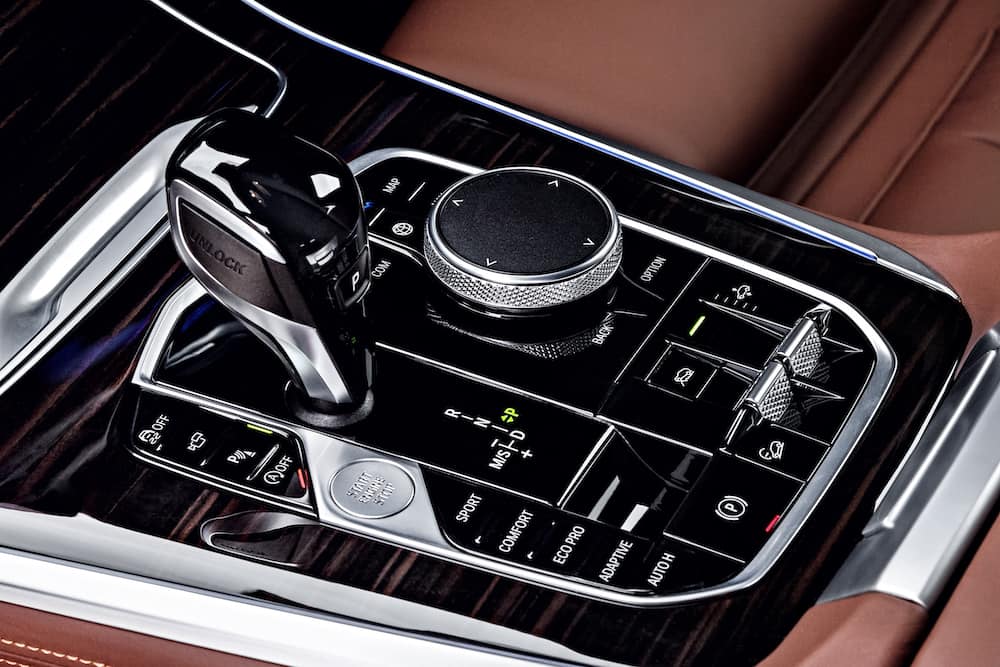
BMW Electronic Parking Brake, EPB
The electronic parking brake, EPB, has been used in BMW models since the E6X 7 series models which debuted to the market in 2002. Not only was this BMW’s first model to feature the new system, but it is also the first production car worldwide to feature this system. This shows how BMW is an early adopter to new technology which has benefits to the vehicle and driver.
Manual hand brakes are very satisfying to use. They have instant feedback on how tight the brake engages, the ratcheting feeling and increase in pressure. Just the classic look inside the vehicle is iconic to sports cars. Manual parking brakes can lock up the rear wheels and provide an easy way to start a slide for the vehicle if desired. There are many downsides however to manual parking brake design in which the electronic parking brake fixes.
Manual parking brakes need adjusting over time. They are typically connected to the rear brakes shoes through a braided steel cable that stretches with use. Each brake cable needs to have almost the same tension on it for the brakes to evenly engage. If not properly adjusted, the car may start to roll backwards if parked on a hill. This not only endangers your vehicle but possibly pedestrians.
Electronic parking brakes in comparison actuate an electric motor which compresses the existing brake calipers used in normal pedal braking. No need for additional brake shoes inside the rotor to act as a secondary brake. We will go over in a detailed list of the benefits of the electronic parking brake and why it is slowly becoming the standard in all new BMW models.
What are the benefits of the Electronic Parking Brake, EPB?
- ✔ The absence of the manual parking brake lever frees up space on the center console.
- ✔ The absence of additional cables and moving parts eliminate additional mechanical wear that would eventually need replacement.
- ✔ No need to tighten stretched brake calbes with use of existing caliper pads.
- ✔ The hill hold function is possible. This automatically applies the brakes to prevent rollback when accelerating from a stop on an incline.
- ✔ Reduction in overall weight of the vehicle due to the absence of mechanical hand brake parts, up to 16lbs (7.3kgs) weight reduction.
- ✔ EPB opens up design freedom for the interior designers as well as routing under the vehicle from the lack of cables.
- ✔ There is not any guessing if the parking brake is properly engaged, the computer knows exactly how much pressure to apply.
- ✔ Fewer warranty claims due to a more reliable, simpler system.
- ✔ EPB works in conjunction with the ABS system which won’t let the wheels lock up allowing emergency braking to stop the vehicle in a shorter distance compared to a manual brake which often locks up the rear wheels increasing brake distance
- ✔ In emergency situations, EPB can work in conjunction with the front wheels in addition the rear wheels compared to just the rear wheel application of the manual brake.
- ✔ The electronic computer controlling the EPB knows the driver is leaving or entering the vehicle due to sensors in the seat belt and door (open or closed) and can seamless apply the brakes if the driver forgets when exiting the vehicle.
While the electronic parking brakes have an incredible list of benefits over the manual parking brake, there are some disadvantages to this design which are explained in the list below.
What are the disadvantages of the Electronic Parking Brake, EPB?
- ✔ EPB’s are not fun, you cannot lock up the rear wheels and slide.
- ✔ There isn’t an industry standard for the application. Pull up to engage and push down to disengage is the intuitive approach which mimics the manual version. However, different vehicles have different integrations. Maserati has a pull pull application for both engage and disengage.
- ✔ Harder to work on yourself since you need an electronic scanner to diagnose engagement issues.
- ✔ The hill hold functions can be poorly integrated as some models may hold the vehicle on a hill too aggressively making for an awkward release from the brakes. Other models may disengage the brake too early catching the driver off guard and ultimately leading the vehicle to roll backwards in the end anyway.
What happens if you apply the EPB when the car is moving?
Typically, pulling the electronic parking brake while driving at speed acts as an emergency brake. The system brakes all 4 wheels and will slow the vehicle to a complete stop. This function still allows the driver to have control and steer the vehicle to a safe area on the side of the road in the shortest possible way. Most systems require you to hold the EPB lever up for the car to continue to brake; releasing the lever stops the braking. However, the instinct to pull this electronic parking brake lever in an emergency situation is not intuitive. Safety experts recommend drivers to push on the brakes as hard as possible while steering to let the ABS system stop the vehicle in the shortest distance possible.
Where can I learn more BMW fun facts?
Learn more BMW fun facts by clicking HERE




